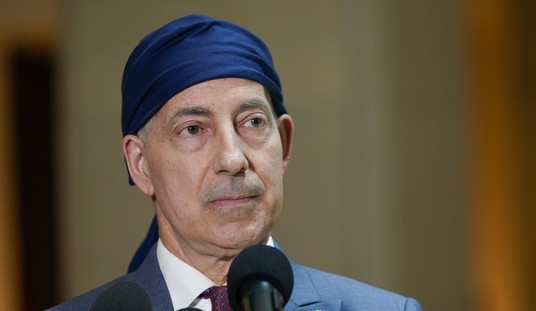WASHINGTON – Rep. Maxine Waters (D-Calif.) on Wednesday asked terror experts for answers on how to combat the rise of white nationalists, as she has been fielding death threats from extremists.
“What can we do to deal with the KKK, the white nationalists, the extremists, the alt-right?” Waters, who serves as ranking member of the House Committee on Financial Services, asked during a Subcommittee on Terrorism and Illicit Finance hearing. “They’re on the internet, they’re Breitbart. If you look at the YouTube, you see how much they want to kill me and others. What can we do?”
The hearing was held to discuss small-scale and “lone-wolf” terrorist threats, with much of the focus on the financial aspects of terror plots. Seamus Hughes, deputy director for George Washington University’s Program on Extremism and former senior counterterrorism advisor for the Senate Homeland Security and Governmental Affairs Committee, told Waters that domestic terrorists are as much a threat as foreign-born terrorists.
“You should be worried about the Orlando shooters, the Omar Mateens of the world as much as you are the James Fields and the Dylann Roofs of the world,” Hughes said.
Mateen is the ISIS-linked terrorist who killed 49 people at the Pulse nightclub in Orlando, Fla., in 2016. Fields is the 20-year-old Ohio man charged with ramming his Dodge Challenger into counter-protesters after a white nationalist rally last month in Charlottesville, Va., killing one person and injuring 19. Roof is the white supremacist from South Carolina who has been convicted of opening fire inside the Emanuel African Methodist Episcopal Church in Charleston, S.C., in 2015, killing nine African-American church members.
Waters reeled off a long list of domestic terror, including the Ruby Ridge standoff in 1992, the Oklahoma City bombing in 1995, the U.S. Holocaust Memorial Museum shooting 2009, the Wisconsin Sikh temple shooting in 2012, the Los Angeles International Airport shooting in 2013, the Colorado Springs Planned Parenthood shooting in 2015, the Portland train attack this year and Charlottesville.
“Extremists radicalized by foreign terror groups are not the only terrorists with the capacity to target and kill American citizens,” Waters said. “Indeed, domestic terror attacks have become more frequent in recent years.”
According to Hughes, domestic terror groups are not under the same pressures as foreign terror groups to disguise the funding mechanisms for their terror plots, given that financing for groups like ISIS, al-Qaeda and Hezbollah are subject to statutory designations on material support.
Hughes described the creative ways in which domestic groups have financed their terror activities. For example, an offshoot of the Aryan Nations, The Order, robbed several armored vehicles in the 1980s, laundering more than $4 million to be used in financing and arming white nationalist groups. He described how in 2011, Army Pvt. Isaac Aguigui murdered his pregnant wife, collected about $500,000 in insurance money and then purchased $30,000 worth of guns and ammunition for his militia group Forever Enduring Always Ready, a group that had plans of assassinating President Obama.
The federal government ramped up collaborative efforts with the financial sector in combating terrorists starting in 2001. Frederick Reynolds, global head of financial crime at Barclays, discussed how outdated financial tactics are not suited for the recent rise of lone-wolf attacks, in which individuals inspired by larger terror organizations carry out operations. He continued that the financial sector is currently hamstrung by domestic laws limiting the amount of information banks and institutions can share across state and national borders.
“Probably the most significant red flag of a potential bad actor – a prior (Suspicious Activity Reporting) SAR – cannot be shared by a U.S. institution with its own foreign branch or affiliate,” he said. “Such limits on information sharing make an ‘enterprise wide’ anti-money laundering system challenging, since sharing key information about customers and their activity within an institution is often prohibited by domestic law.”








Join the conversation as a VIP Member